More Suburban Firms Moving Downtown?
It’s all about attracting millennials, new story suggests.
The top-of-the-fold story in today’s Milwaukee Journal Sentinel is headlined, “Suburban firms moving downtown to attract and keep millennials.” The article by reporter Tom Daykin, echoes a story by Urban Milwaukee last April about the trend of suburban businesses moving to Milwaukee’s Downtown.
Daykin’s story leads with 28-year-old Michael Zimmerman, an IT professional with HSA Bank in June, who lives downtown, likes walking to restaurants, and said it’s easier to meet his friends after work — because many of his fellow millennials have jobs in Downtown. The story notes that a Public Policy Forum survey of Milwaukee-area millennials in December found 37 percent agreed that Downtown is the location in the metro area where they would most like to work.
“As a greater portion of the workforce becomes millennial, the employers are looking for sites that will attract the best talent,” developer Stewart Wangard told the newspaper. Wangard, who is creating 113,830-square-foot office building by combining the renovated four-story southern portion of the former Laacke & Joys building, 1433 N. Water St., with a five-story addition, added that “urban sites have better alignment with millennial values.”
David Raysich, managing partner of Plunkett Raysich Architects, told Urban Milwaukee the company’s move to the city will help the company recruit and retain young employees: “Younger people want to be Downtown, they want to be where the action is, where all the restaurants are, where Summerfest is, with all the things to do at night.”
As Urban Milwaukee reported, the list of suburban companies that have moved downtown includes Stormwater Solutions Engineering, which moved from Pewaukee in 2012, Corvisa Services (from Wauwatosa, 2012), Natural Resources Technology (Pewaukee, 2013), Trusted Media Brands Inc., formerly known as Readers Digest (Greendale, 2014), Irgens (Wauwatosa, 2014), HSA Bank (Glendale, 2014) and Stark Investments (St. Francis, 2015).
They were joined by Dohmen, which had been located in the Third Ward since 1858 and moved to a temporary headquarters in Menomonee Falls while it completely redesigned and renovated a building in the Third Ward, which is now its new headquarters.
Daykin adds one company to that list: Direct Supply Inc., based on Milwaukee’s northwest side, in 2012 opened a technology center at 1020 N. Broadway, within Milwaukee School of Engineering‘s downtown campus. The company opened the downtown facility in part to help attract younger employees, its senior vice president Bob Klein told the newspaper.
Daykin also notes that HSA Bank, since relocating to the Schlitz Park campus downtown, has expanded from 71 employees to 269 employees, “and expects to have around 500 employees at Schlitz Park by the end of 2018.” Daykin also reports that a commercial industry real estate source said Brookfield-based business marketing agency Bader Rutter & Associates Inc. and Oak Creek-based Master Lock Co. are considering a move to the new Wangard office building on Water St. That would be big for the city.
The JS story looks at the trend only from the perspective of businesses and ignores the impact of residential development: from 2004 to 2014, developers built 6,348 new residential units in greater downtown, city statistics show, and an estimated 765 additional units were constructed in 2015. Many of these new residents are millennials. “What we’re continuing to see is a growth in the residential population of Downtown and adjoining areas, which means a growing work force, which makes it more attractive to companies,” Mayor Tom Barrett told Urban Milwaukee.
Daykin does note the impact of improvements at Schlitz Park, which have helped attract suburban firms to Downtown. Schlitz Park developer Gary Grunau and his partners have since 2010 spent money to demolish the former Schlitz brew house and replace it with a public square, as well as on new fitness centers, a bike-sharing station and renovations at the Brown Bottle restaurant. Grunau told the JS he “recently landed a software firm that will lease 20,000 square feet, but declined to provide more information until the lease is final.”
Renderings of Wangard’s Office Project
Political Contributions Tracker
Displaying political contributions between people mentioned in this story. Learn more.
- December 10, 2018 - Tom Barrett received $200 from Stewart Wangard
Back in the News
-
Justice Ziegler Misquotes US Supreme Court Decision
 Dec 2nd, 2025 by Bruce Murphy
Dec 2nd, 2025 by Bruce Murphy
-
Will West Milwaukee Do Development Near Brewers Stadium?
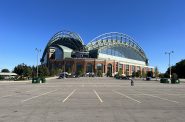 Dec 1st, 2025 by Bruce Murphy
Dec 1st, 2025 by Bruce Murphy
-
Key Streetcar Opponent Opposes Effort to Shut It Down
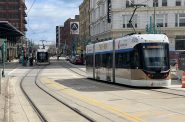 Nov 10th, 2025 by Bruce Murphy
Nov 10th, 2025 by Bruce Murphy



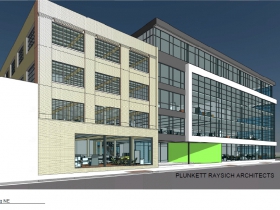
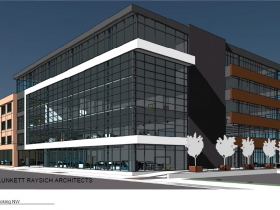
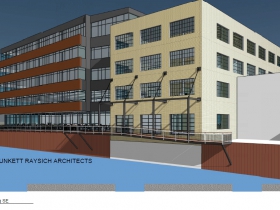
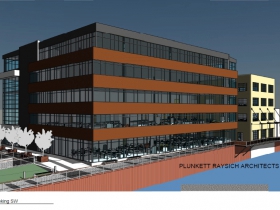
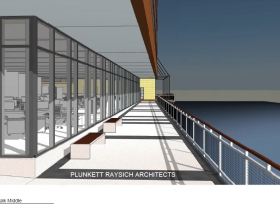
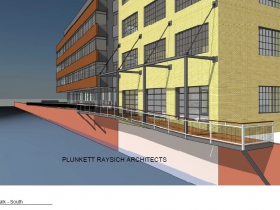
















How can this be WCD? Businesses are choosing to move to downtown Milwaukee. Kind of works against your argument that businesses are all leaving downtown for Waukesha. That must make your head explode.
It kind of surprises me that only 37% of people aged 18-34 want to work downtown. Would the rest of them really prefer to work in some bland office park in Brookfield? It doesn’t really bode well for all the effort at making downtown the business center of the metro area.
I always have a good chuckle when people dream of the corporate office I work in, moving to the suburbs & they can enjoy “free” parking. Then, they start to argue about which suburb, since they live from Fond du Lac to Port Washington to Kenosha & western Waukesha County. It’s that point in the conversation that Downtown looks pretty good, albeit from the employer’s perspective… everyone would **of course** love to have their good job right around the corner from their home.
It’s just that with a location in Downtown Milwaukee, you can reach the talent from the entire SE part of the state.
Now we need to link downtown with the region with brt.
I appreciated the link to the survey conducted by the Public Policy Forum. It rightly notes some of the survey’s limitations: It only surveyed 18-34yo people in the four-county (two-thirds of whom grew up in the area). And, it needed to rely upon statistical weighting because of a lack of response from males, non-Caucasians, and 18-24 year olds.
What it points out that I haven’t seen in coverage of the survey is that, more than a desirability for walk ability to jobs, restaurants etc., respondents indicated that safely and the economy are really important to them and that quality roads and highways rank higher than things like mass transit, bike ability, etc. While there may be good reasons for this (and the survey summary seems to attempt to address them), covering these results probably lends a more balanced perspective to this important research.
Lastly, I wish we could find a word to use besides “millennials” to describe the desirable, young professional market. This group is a subset of the millennial generation but is hardly representative of the generation’s fullness. I believe those living in rural areas and the urban poor who are 18-34yo get short shrift.
Oh, and for anyone interested in millennial research, I recommend Googling “millennial impact report.” While I suspect this research also misses the boat on rural and the urban poor, it is good stuff, especially regarding millennial social engagement, volunteering, giving, etc.
Oh, and, as Joe rightly points out above, only 37% say they want to live downtown. While I believe young professionals are leading the way in moving back to cities, this percentage alone points to the fact that this generation is not the least bit lockstep in this regard.
One issue that also must be faced is whether those same young millennials will want to stay in the city once they have children. I’ve heard it often pointed out that there are not a whole lot of public schools downtown. And are there sufficient neighborhood parks, or even supermarkets to provide affordable food for a growing family, as opposed to food options for young folks on the go?
I’ve heard that many developers have focused on the providing apartments for these millennial professionals but are there ones suited for families? Some old neighborhoods like the Riverwest, East Side and Bay View attract young families, but will some folks just leave the city for the suburbs once they start looking for another lifestyle or better “family amenities”?
If you live downtown you actually have more supermarket choices than most suburbs. There are two downtown supermarkets (Metro Market and Pick’n Save) with a third (Fresh Thyme) on the way. A fourth (Whole Foods) is about one mile away. Downtown also has two farmers markets and the year-round Public Market.
That’s 4 grocers, 2 farmers markets, and the Public Market within a mile or two, accessible by car, sidewalk, bus, and (soon) streetcar. Does any suburban community come close to this?
@Tom D Thanks I meant to point that out… In fact living downtown provides residents with numerous supermarket choices (far more nearby than one would have living in many suburbs) and many many parks.
PS Don’t forget Gloriosos!
Tom and Dave, Thanks for the clarifications about supermarkets. I was thinking about the city beyond just downtown. Yes, some areas like East Town and East Side have excellent choices and are very walkable. Some other areas not as much. Mostly, While the Public Market is nice for grab and go, people have been talking for years about the need for a larger supermarket to serve the Third Ward and Westown.
I trust the market will address that. As for other broader food deserts, there’s still a ways to go.
It is a very good thing that these companies want to be downtown. However, they should leave their suburban building design in Menomonee Falls. I hope the design develops some urban muscle before they start tearing down the Charles Atlas of a building that is there now.
C’mon guys, step up your game.
As a parent living in the suburbs, I suspect the folks discussing on this page don’t have kids, and aren’t good at imagining having kids. Do you really think that a supermarket is all that’s needed to create a worthy environment in which to raise kids? I’d also add in a choice of good schools, parks and green space, other kids to play with, kid-friendly areas, and a significantly-smaller number of street-dwelling crackheads.
Downtown has some advantages, yes. And a lot of issues that are yet to be addressed.
Since schools were discussed here, I think it is worth nothing that MPS has expanded or is expanding a number of schools in neighborhoods near downtown.
– Golda Meir School, just north of downtown along King Drive, expanded into a second building to allow it to serve more middle school students and to create a high school (grades 3-5 are in the original campus; grades 6-12 are in the new upper campus). The school is one of the first in Wisconsin to earn the right to off a new Advanced Placement diploma program for high school students and was rated ‘Exceeds Expectations’ on its most recent state report card.
– Fernwood Montessori School, in the Bay View area, is undergoing an addition to allow it to continue to serve the larger number of students it has enrolled in kindergarten in recent years. Fernwood was also rated ‘Exceeds Expectations’ on the most recent state report card.
– Maryland Avenue Montessori School, on the east side, is preparing for an addition of its own. Maryland Avenue too was rate ‘Exceeds Expectations.’
Tony – very valid points but for this city to really thrive that achievement somehow needs to make it past I43.
My family is a case in point. I absolutely love this city but not more than I love my kids. We’ve lived in MKE since we moved here in 2007 but we don’t want our kids going to our local MPS school and don’t want to risk trying to send them to a choice school. Our 8 year old is enrolled in Shorewood but there is no gaurantee that our youngest will get in. That means that as much as it pains us as a family we are leaving all the conveniences of the urban city to move to an inner suburb.
I hope more firms move downtown and more people move not just downtown but other areas of the city and get these schools up to par but until that happens this city like many others will suffer. Not even Manhattan has figured this one out yet.
Casey – Thanks for the thoughtful response. I think everyone would agree we need to see stronger achievement throughout the city, but when we look at our highest-performing schools they are not exclusively east of I-43 or near the downtown area. I was only giving those as examples because the story and related comments seemed to be focus on downtown. Our schools that meet and exceed expectations on the last report card include, for example, neighborhood schools such as Franklin and Jackson on the north side, Greenfield and Vieau on the south side and a host of others along with many of our specialty schools.